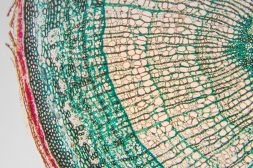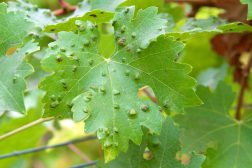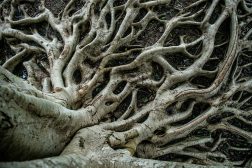Table of Contents
Definition
noun
plural: secondary cell walls
ˈsɛkənˌdɛɹi sɛl wɔːl
The layer of the plant cell wall that forms between the primary cell wall and the cell membrane of the plant cell, and characterized by being a thick layer rich in lignin that strengthens and waterproofs the wall
Details
Overview
A plant cell is a membrane-bound structure characterized by the presence of cell wall, plastids (especially chloroplasts) and large vacuole (apart from the other cytoplasmic structures and organelles (e.g. nucleus, mitochondria, endoplasmic reticulum, and Golgi apparatus). Similar to an animal cell, the plant cell has a cell membrane that surrounds the protoplasm and separates it from the outside environment. However, the plant cell differs from an animal cell in having another layer on top of the cell membrane called the cell wall. The presence of cell wall, though, is not exclusive to plants. Other organisms that have cell walls are algae, fungi, and most prokaryotes. The plant cell wall is different from the cell wall of these organisms in terms of structure and composition.
In plant cells, the cell wall is a tough, rigid structure that may consist of the primary cell wall which is generally a thin, flexible and extensible layer composed of cellulose, pectin and hemicellulose, and a secondary cell wall which is a thick layer rich in lignin that strengthens and waterproofs the wall and is formed inside the primary cell wall that has stopped increasing in surface area when the cell is fully grown. In between the primary walls is a middle lamella which is a pectin-rich intercellular material that glues the adjacent cells together. The cell wall is very essential in plants as it helps resist osmotic pressure. In bacteria, the cell wall is composed of peptidoglycan, and is essential to the survival of many bacteria. Bacteria have been classified into Gram-positive and Gram-negative based on the structure of the cell wall. Gram-positive bacteria possess thick cell wall consisting of many layers of peptidoglycan and teichoic acids. Gram-negative bacteria have relatively thin cell wall consisting of few layers of peptidoglycan. In archaea, the cell wall is characteristically lacking the peptidoglycan (except for a group of methanogens) and is composed of glycoprotein S-layers, pseudopeptidoglycan, or polysaccharides. In fungi, the cell wall is composed of chitin and other polysaccharides whereas in algae, it is made up of glycoproteins and polysaccharides, and in certain algal species it may be composed of silicic acid.
Secondary cell wall features
In plants, there are three parts of cell walls: (1) primary cell wall, (2) secondary cell wall, and (3) middle lamella. The secondary cell wall forms inside the primary cell wall that has stopped increasing in surface area when the cell is fully grown. Thus, the secondary cell wall is found in between the primary cell wall and the cell membrane of a plant cell. However, not all plant cells form secondary cell wall. It only occurs in certain cell types, e.g. tracheids, vessel elements, and sclerenchyma.
The secondary cell wall consists mainly of cellulose (i.e. about 35-50%). It is also rich in lignin (10-25%). Lignin is an organic substance that seeps through the spaces between cellulose, hemicellulose, and pectin. It acts as a binder for the cellulose fibers and waterproofs the cell wall. The secondary cell wall is also rich in xylan (20-35%), a type of hemicellulose. Pits that form in the secondary cell wall allow cell-cell communication through plasmodesmata that connect one cell to another through their secondary cell walls.
Biological functions
The cell wall protects the plant cell from mechanical stress. In plant cells, the cell wall provides strength, rigidity, and protection, especially from osmotic lysis. When the cell stops from expanding, a secondary wall is deposited between the primary cell wall and plasma membrane that renders support, strength and protection. In some cells, such as in xylem, the secondary cell wall contains lignin, which strengthens and waterproofs the wall. Other plant cells have secondary cell wall with additional function, such as food storage. For example, cotyledons and endosperm have secondary cell walls that contain little cellulose but more on polysaccharides.
Further reading
See also
© Biology Online. Content provided and moderated by Biology Online Editors




